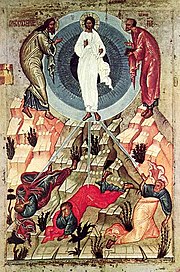
Start reading
Remove from Saved
Add to list
Download to app
Share
Dancing in the Water of Life
By Thomas Merton
5/5 (2 ratings)
571 pages
16 hours
Included in your membership!
at no additional cost
Description
The sixties were a time of restlessness, inner turmoil, and exuberance for Merton during which he closely followed the careening development of political and social activism – Martin Luther King, Jr., and the March on Selma, the Catholic Worker Movement, the Vietnam war, and the assassination of John F. Kennedy. Volume 5 chronicles the approach of Merton’s fiftieth birthday and marks his move to Mount Olivet, his hermitage at the Abbey of Gethsemani, where he was finally able to fully embrace the joys and challenges of solitary life: ‘In the hermitage, one must pray of go to seed. The pretense of prayer will not suffice. Just sitting will not suffice . . . Solitude puts you with your back to the wall (or your face to it!), and this is good’ (13 October, 1964).
New Age & Spirituality
Christianity
All categories
Read on the Scribd mobile app
Download the free Scribd mobile app to read anytime, anywhere.iOS
Android
PUBLISHER:
HarperCollins
RELEASED:
Mar 17, 2009
ISBN:
9780061741104
FORMAT:
Book
About the author
 Thomas Merton
Thomas MertonThomas Merton (1915-1968) is one of the foremost spiritual thinkers of the twentieth century. Though he lived a mostly solitary existence as a Trappist monk, he had a dynamic impact on world affairs through his writing. An outspoken proponent of the antiwar and civil rights movements, he was both hailed as a prophet and castigated for his social criticism. He was also unique among religious leaders in his embrace of Eastern mysticism, positing it as complementary to the Western sacred tradition. Merton is the author of over forty books of poetry, essays, and religious writing, including Mystics and Zen Masters, and The Seven Story Mountain, for which he is best known. His work continues to be widely read to this day.Read more
Related to Dancing in the Water of Life
Titles In This Series (7)
Skip carousel
Carousel Next
Run to the Mountain: The Story of a VocationThe Journal of Thomas Merton, Volume 1: 1939-1941byThomas Merton
Rating: 5 out of 5 stars(5/5)

Entering the Silence: Becoming a Monk and a WriterbyThomas Merton
Rating: 4 out of 5 stars(4/5)

A Search for Solitude: Pursuing the Monk's True Life, The Journals of Thomas Merton, Volume 3: 1952-1960byThomas Merton
Rating: 0 out of 5 stars(0/5)

Turning Toward the World: The Pivotal Years; The Journals of Thomas Merton, Volume 4: 1960-1963byThomas Merton
Rating: 0 out of 5 stars(0/5)

Dancing in the Water of LifebyThomas Merton
Rating: 5 out of 5 stars(5/5)

Learning To Love: Exploring Solitude and FreedombyThomas Merton
Rating: 4 out of 5 stars(4/5)

The Other Side of the Mountain: The End of the JourneybyThomas Merton
Rating: 0 out of 5 stars(0/5)
Read More From Thomas Merton
Skip carousel
Carousel Next
A Book of HoursbyThomas Merton
Rating: 4 out of 5 stars(4/5)

A Year with Thomas Merton: Daily Meditations from His JournalsbyThomas Merton
Rating: 4 out of 5 stars(4/5)

The Inner Experience: Notes on ContemplationbyThomas Merton
Rating: 4 out of 5 stars(4/5)

Thomas Merton - Spiritual Direction and MeditationbyThomas Merton
Rating: 4 out of 5 stars(4/5)

Following the Call: Living the Sermon on the Mount TogetherbyEberhard Arnold
Rating: 0 out of 5 stars(0/5)

Dialogues with Silence: Prayers & DrawingsbyThomas Merton
Rating: 5 out of 5 stars(5/5)

When the Trees Say Nothing: Writings on NaturebyThomas Merton
Rating: 4 out of 5 stars(4/5)
The Intimate Merton: His Life from His JournalsbyThomas Merton
Rating: 4 out of 5 stars(4/5)
Come into the SilencebyThomas Merton
Rating: 0 out of 5 stars(0/5)
Related Books
Skip carousel
Carousel Next
The Springs of Contemplation: A Retreat at the Abbey of GethsemanibyThomas Merton
Rating: 0 out of 5 stars(0/5)

Entering the Silence: Becoming a Monk and a WriterbyThomas Merton
Rating: 4 out of 5 stars(4/5)

The Intimate Merton: His Life from His JournalsbyThomas Merton
Rating: 4 out of 5 stars(4/5)

Witness to Freedom: The Letters of Thomas Merton in Times of CrisisbyThomas Merton
Rating: 0 out of 5 stars(0/5)

Learning To Love: Exploring Solitude and FreedombyThomas Merton
Rating: 4 out of 5 stars(4/5)

The Hidden Ground of Love: LettersbyThomas Merton
Rating: 0 out of 5 stars(0/5)

Run to the Mountain: The Story of a VocationThe Journal of Thomas Merton, Volume 1: 1939-1941byThomas Merton
Rating: 5 out of 5 stars(5/5)
The Other Side of the Mountain: The End of the JourneybyThomas Merton
Rating: 0 out of 5 stars(0/5)
Love and LivingbyThomas Merton
Rating: 3 out of 5 stars(3/5)
Turning Toward the World: The Pivotal Years; The Journals of Thomas Merton, Volume 4: 1960-1963byThomas Merton
Rating: 0 out of 5 stars(0/5)
A Search for Solitude: Pursuing the Monk's True Life, The Journals of Thomas Merton, Volume 3: 1952-1960byThomas Merton
Rating: 0 out of 5 stars(0/5)
When the Trees Say Nothing: Writings on NaturebyThomas Merton
Rating: 4 out of 5 stars(4/5)
Choosing to Love the World: On ContemplationbyThomas Merton
Rating: 4 out of 5 stars(4/5)
Contemplation in a World of Action: Second Edition, Restored and CorrectedbyThomas Merton
Rating: 3 out of 5 stars(3/5)
Where Prayer FlourishesbyThomas Merton
Rating: 0 out of 5 stars(0/5)
Faith and Violence: Christian Teaching and Christian PracticebyThomas Merton
Rating: 5 out of 5 stars(5/5)
The School of Charity: The Letters Of Thomas Merton On Religious Renewal & Spiritual DirectionbyThomas Merton
Rating: 3 out of 5 stars(3/5)
The Courage for Truth: Letters to WritersbyThomas Merton
Rating: 0 out of 5 stars(0/5)
Related Podcast Episodes











